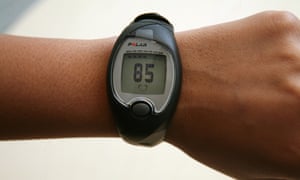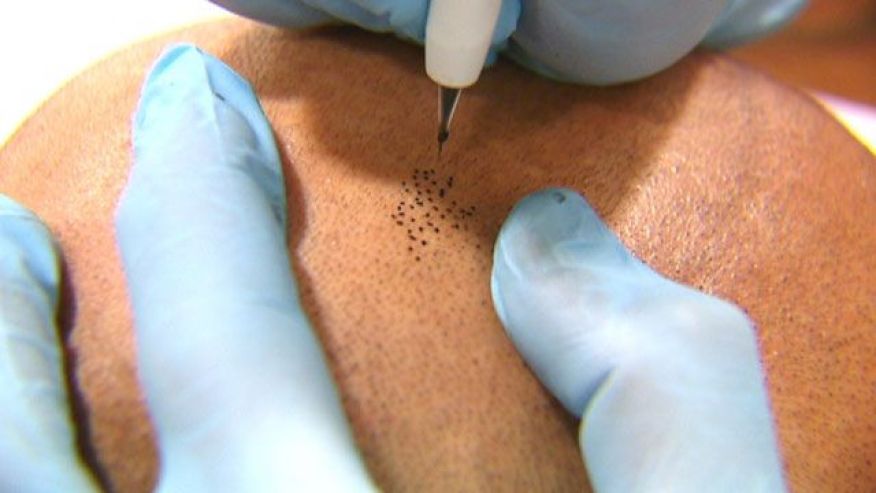
As an old-school runner, I’ve always had a rather scathing attitude towards heart-rate monitors, fitness trackers and associated technology. But as an older runner – I’m 53 – I find I am increasingly susceptible to health scares. I was scared indeed when I witnessed a far younger fellow parkrunner being brought back from the brink by paramedics after he collapsed on the finish line. He went on to make a full recovery, but his near-death experience had a positive legacy: the London Ambulance Service provided our park cafe with a defibrillator, and gave our parkrun team CPR training.
We found out later that the casualty had had a narrowed aorta since birth, and that his collapse could have come at any time, but the episode made a big impression on everyone, especially us more mature runners. Mental notes were made to check in at our local GP surgery for an MOT.
A few weeks after – all thoughts of an MOT forgotten as I launched into marathon training – I pulled up during mile repeats on the track because my heart hurt. I jogged awhile, upped my pace a bit, but finished the session tentatively. I put it down to eating too many biscuits before training.
A month or so after that incident, I felt faint and sick during a long, slow marathon-training run, and my heart seemed to be racing even though I was running at an easy pace. I cut the run short and headed home to rest. Turns out I was sickening that time; I was laid low with a fairly typical winter virus for a few days.
The culmination of all this ticker-related anxiety was a sudden fascination with heart-rate monitors. The traditional ones, with their cumbersome chest bands, seemed a bit of a faff, but when I was presented with a Mio Fuse heart-rate activity tracker, which is only a tiny bit more complicated than a Fitbit, I liked the cut of its jib.
Using it, however, caused another alarm. I had calculated my maximum heart rate (MHR) using the easy formula 220 minus my age, 53, which meant my MHR should be 167. The trouble was, my new toy told me that it was galloping way above this limit every time I did an 800m repeat.
I wondered if pushing myself into what I feared was some sort of danger zone was wise in a woman on the uphill side of 50. Was I straining my heart? Could it explode at any point?
Who better than Professor John Brewer, head of the school of sport, health and applied science at St Mary’s University, Twickenham, to put my mind at rest?
“What you discovered is a fundamental flaw in the 220-minus-age theory,” he told me, soothingly, having explained, with admirable patience, that hearts rarely explode. “It’s a rather inaccurate measure of fitness, an approximate calculation. It tends to result in a rather too cautious measure of maximum heart rate for older, fit people.
“If you’re fit, you know you have to work at a level of tolerable discomfort to get the most from your training, and that might mean pushing above the ‘acceptable’ maximum heart rate for your age. So, if you find that your MHR pushes up to nearer 182 beats a minute, instead of the more modest 167 decreed for your age, you may find that the heart-rate monitor tells you you’re pushing too hard.”
Brewer continues: “During steady runs, heart rate tends to creep up even if running speed stays the same. This is primarily due to the thermoregulatory [heat loss] challenge faced by the body during exercise. As you run, so core temperature increases – the main way of losing heat to control this is through sweating, but the second mechanism is diverting blood to the skin so that heat can be dissipated. These means that the heart has to work harder as it is being challenged to supply blood to the muscles to deliver oxygen, and blood to the skin to lose heat.
“All this is why good coaches are more likely to say, ‘Listen to your body’ than keep your eyes glued to a heart-rate monitor all the time … becoming a slave to it may stop you exerting yourself, which is not beneficial in training.”
Brewer concedes that heart-rate monitors can be very useful as another way of checking levels of exertion and, for less fit runners starting out, they can be a boon for lowering the risks involved in doing too much fast running too soon.
However, the heart needs its workouts like any other muscle, and if you stay too much in the comfort zone, it won’t be working hard enough.
“We’re designed to exercise, and our hearts are the No 1 muscle involved when we do. If you’re fit and healthy, you owe it to your heart to make it work hard during tough interval sessions. With such hard work, your heart will help you to improve,” says Brewer.
”I’d suggest you leave your heart-rate monitor at home sometimes and learn to know what tolerable discomfort feels like. Use it as a guide to check your resting heart rate and recovery times during occasional sessions, know that your maximum heart rate is going to be slightly higher the fitter you are, and your recovery towards resting heart between efforts all the quicker. Learn to work around 70% of your personal MHR figure for the most beneficial effects.”
Of course, if you feel chest pain, dizziness and nausea that you can’t attribute to raiding the biscuit tin too enthusiastically 10 minutes before your track session, back off and go for a walk instead.
[Source:- Gurdian]


















